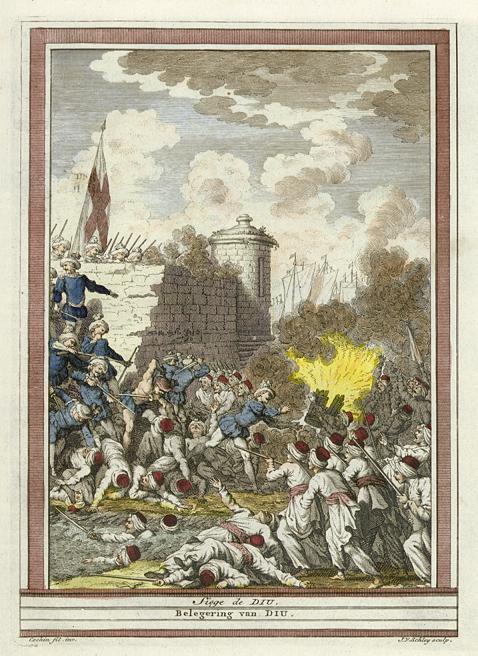In 1509, a major conflict during the Portuguese naval expansion in the Indian Ocean would pit the Portuguese Empire against a powerful alliance. Portugal’s hunger for hegemony over the trade in spices would be met with great resistance. The focal point of the conflict was the city of Diu. The city was an important trade center, with a vital strategic position on the Indian subcontinent.
Prelude to war
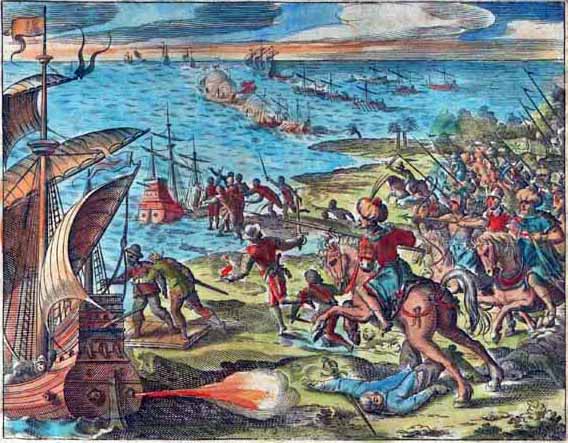
Against Portugal’s naval expansion a powerful Coalition was formed in Northwest India. This coalition was aided by the Sultanate of Gujarat, the powerful Mamluks Sultanate, the Calicut Zamorin, the Ottoman Empire, and even Venice.
The profitable spice trade in the Red Sea was precious to each member of the Coalition. Portugal’s ambitious politics were seen as a considerable threat to the income of each country.
Moreover, if Portugal managed to take control of the trade, it would turn them into a powerful nation, possibly with enough control and resources to continue expanding their influence.
The countries of the coalition aided each other with boats, gold, and other resources. The majority of the Coalition fleet was comprised of large Mamluk ships. The local Indians could only provide small boats. All in all, the naval force of the coalition counted 12 heavy ships – carracks and galleys – and 80 smaller, faster-moving sailing ships.
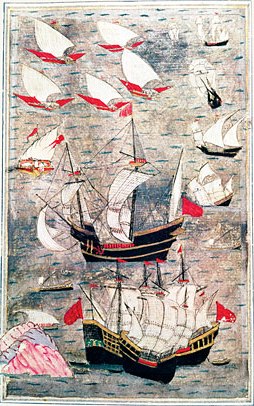
The Portuguese Empire were not going to give up on their idea. On the Kochin port, southeastern of Diu, they had anchored a significant naval force. Under the Portuguese flag, 18 strong vessels were prepared to meet with the allied resistance. The Portuguese vessels were well-equipped with guns, but with considerable man power as well.
Almost 1700 seasoned sailors, armed with quality weaponry and armor, were deployed on the ships. Thus, the force of the Portuguese Empire was not only superior in numbers, but also in quality. Their men were trained and experienced in naval warfare, which could not be said for the Coalition.
For the Coalition the firepower of the Portuguese was a huge problem. The Mamluks understood that their chances of success, against the closing force of the ambitious empire, were not very high. Therefore, their best option was to choose the defensive stance. The force of the coalition decided to fortify behind the fortress walls of Diu. Their idea was to use the guns of the city to get rid of Portugal’s fleet. However, as they would later find out, this was not in their favor at all.
The Decisive Blockade of Diu, February 3rd, 1509
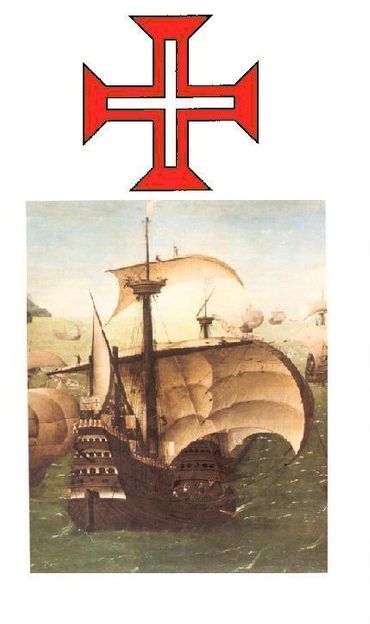
When the ships of the Portuguese closed on the city a few things become clear for the Coalition. First, they were completely defenseless. Not only were the guns of Portugal’s navy with longer in range, but the Coalition could not do anything other than stare at the incoming cannonballs, as they destroyed everything in their path.
The Portuguese made a naval blockade. They started an initial heavy bombardment at the enemy vessels and fortress. They inflicted a great damage on the defensive line of the Coalition, greatly decreasing their numbers. After that massive bombing, they made an all-out attack, taking over the boats of the Coalition one after another.
This is where the allied force found out their second critical disadvantage. Not only were their own ships smaller, but the Portuguese vessels were too high for them to board. Thus the small vessels of the Coalition were pressed by the bigger and heavier Portuguese fleet. The Portuguese Marines used their higher position and further damaged the already miserable enemies with grenades and arquebuses. Soon enough the naval force of the Coalition was at the bottom of the Red sea.
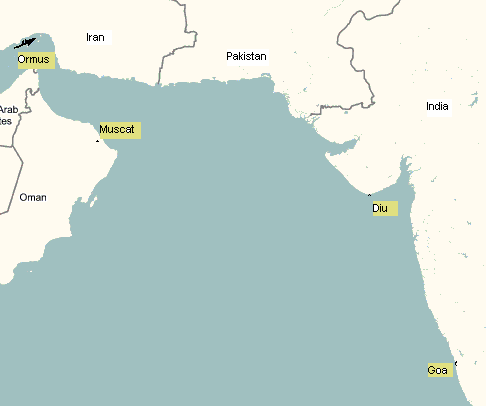
The outcome of the battle was clear. The Portuguese had won triumphantly. Their brilliant victory left the enemy disabled for years to come. The imperial force managed to capture three of the Sultan’s flags from the infamous Mamluks, a further disgrace for the powerful Sultanate.
Hundreds of warriors from Gujarat and Egypt were captured, only to meet an even more painful death. The fate of those taken in captivity was not at all agreeable.
On the orders of Francisco de Almeida, those taken prisoner were tied to cannons, to be ruptured by the fired cannonballs. This terrible sentence was his revenge for the death of his son in a battle a year earlier at Chaul.
The Egyptians at Chaul, terrified of the Portugal’s power, released all the prisoners they had taken earlier. Gujarat shamefully had to pay over 300,000 xerafins as a compensation.
This critical victory was overwhelming for the countries of the coalition. They were left with no choice but to retreat for a long period. The spice route was in the hands of the Portuguese Empire and allowed them to capture even more important ports for the trade. The victory at Diu increased the power of the Portuguese Empire, and ensured their hegemony over the naval trade in the Red Sea. The only rival that managed to take over their position was the British East India Company.
Although this battle was not the end of the naval warfare for trade, it was a decisive victory for the Portuguese Empire. It took another 30 years for the Coalition members to make a second attempt on capturing the important city of Diu. The Gujarat Sultanate and the Ottoman Empire besieged the Portuguese controlled Diu in 1538 but failed so badly, that they had to withdraw due to the immense casualties.
In 1547 the Gujarat Sultanate again failed to conquer Diu. That second siege of Diu lasted for a long seven months and the fleet of the Gujarat Sultanate was destroyed. That second failed attempt and series of defeats suffered from the Ottomans in their naval clashes with the Portugals, were the reason they put an end to any further attempts. The city of Diu remained a Portuguese dominion for almost 5 more centuries until they lost it in 1961.
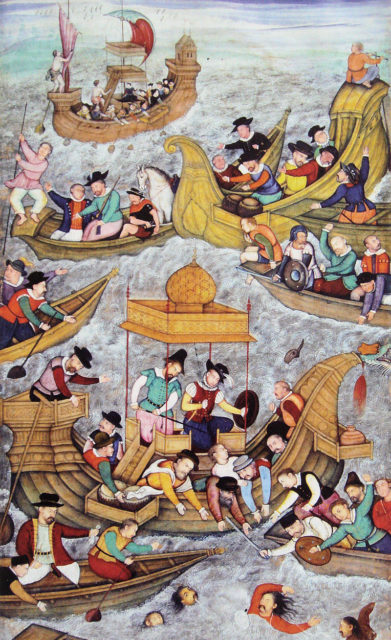
Bibliography:
- Bailey, Diffie, “Foundations of the Portuguese Empire”, 1415–1580, University of Minnesota Press, 1977
- Kuzhippalli-Skaria, Mathew (1986), Portuguese and the Sultanate of Gujarat, 1500-1573, New Delhi
